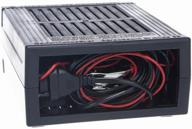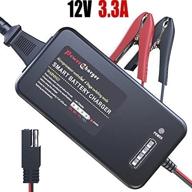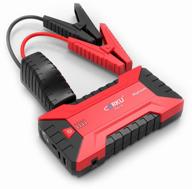
Review on 🌞 HQST 10A PWM Solar Charge Controller with LCD Display, 12V/24V Auto Recognition, 5V 1A USB Port, Compatible with Sealed, Gel, Flooded Lead-Acid & Lithium Batteries by Darrell Kiley

Works fine when you first plug it in - hope it continues to work!
UPDATE: More than 2 years later and it still works great! I intend to power a 10 watt night light in a remote building and run a charger for my quad during the winter. square hole, then tighten the terminal screws to pull the wires up. I reused wires from another controller that had connectors, which makes it much easier to connect and disconnect the battery and solar panel. I connected the battery and the LCD turned on as expected. Then I connected the solar panel and started getting data on the strength of the photovoltaic source. The LCD continuously cycles through a series of screens displaying various parameters. Parameter E0 shows no errors. All is well! I long pressed a red button and reset the now flashing "16" to "0". (everything is described in the manual). It is assumed that the load circuit is turned on at dusk and turned off at dawn. I assumed this was causing a very low voltage from the solar panel (PV) at night. However, closing the solar panel and waiting a minute for the controller to change settings did nothing. No light sensor is visible on the controller, but it wasn't possible to cover it either. I later found that the 1 minute delay before the load circuit tripped was much longer. I unplugged the panel, did a few other things, and when I came back the load circuit was active. However, the cancellation of the load circuit is about 1 minute. I connected the cigarette lighter socket to the load terminals for testing and reset the "0" to "17" so I have power on the "load" wires all the time. indicated by the lamp icon on the LCD. I hooked up a 12v car handheld vacuum that worked fine. The LCD displays are remarkable. Battery voltage with vacuum off is 14.4V, 100% charged, PV 0.2A and load 0.0A. With vacuum on, battery voltage dropped to about 12.2V, 33% charged, PV 6.0A and Load 7 A As soon as the vacuum cleaner was switched off, the previous values began to appear again with no load. I checked the battery voltage with the solar panel off and the LCD showed 12.6V. My multimeter showed 12.8V. I reconnected the solar panel and the battery voltage went up to 14.4V on the LCD and 14.6V on the gauge. Accordingly, the LCD was 0.2V less than the multimeter. Actual readings are more accurate. So it looks like the battery percentage correlates to the battery voltage at the battery terminals, which depends on the voltage the controller is supplying from the solar panels. If the power is supplied through the panel, the voltage will be higher than if it is not. After about 30 minutes at night (after the battery has had time to settle down after charging), the percentage and voltage of the battery should reflect the actual state of the battery. I have to confirm this tonight and update the review accordingly. A nightly check seemed to confirm this. The LCD PV current appears to be the actual current drawn by the controller to power the battery. It showed 0.2A with no load on the battery but max 6A (bright sun overhead) when the vacuum was running. So the charged battery received a small trickle of just 0.2A. The battery percentage did not correlate well with the battery voltage readings under load. 12.2V for a lead-acid battery is approximately 60% charged. (>12.6V fully charged), not 33%. When I covered the solar panel, the battery voltage slowly stabilized at 12.6V. The battery percentage was now 96%. It should have been 100. Obviously not a very reliable parameter. So far everything seems to be working as it should. Plugged my inverter into the "load" circuit and charged my ATV overnight with the battery tender. This morning the quad was charged at 0.1 amps with 0.2 PV amps. With the load off, the battery voltage was 12.4V/78% according to the LCD, but we know that the voltage is closer to 12.6V, so it's still almost fully charged. An hour later the battery was at 12.9V/100%. The USB port appears to be configured as "charging". Thus, power is only supplied when the lamp icon is displayed. I had to reset from 0 to 17 this morning during a power outage to charge my phone. It's a 1A output, so no "fast" charge. However, using an inverter and fast charging the phone provides this functionality. With one phone connected to USB power and another connected to an inverter/fast charger via the load terminals, the battery voltage was 12.2V/63%, PV 0.8A {with an actual measured PV of 12.4V and 0 .83 A on a cloudy afternoon } and 1.2 A load. This raised the temperature reading from 19C to 30C, although the controller didn't feel warm. As more gray clouds rolled in, the PV dropped to 0.3A and the battery voltage to 11.9V. About 30 seconds after the load was removed by charging the phones, the battery voltage on the LCD read 12.2V. FYI: On On a rainy, cold, overcast day, a 100-watt panel may seem to put out 4-10 watts (maybe 20-50 watts per day). The big question is whether this device will work reliably for a long time. So far, so good.
- Several competitors
- disappear
New products
Comments (0)
Top products in 🔋 Jump Starters, Battery Chargers & Portable Power
Another interesting products
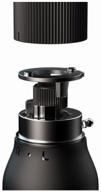
Xiaomi Mijia Ratchet Screwdriver 16 in 1 Screwdriver with Interchangeable Bits, 10 pcs, Black

22 Review
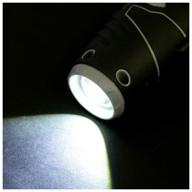
Rechargeable screwdriver OA-3,6F (433.0.2.00), 3.6 V, 1.3 Ah Li-ion, blister

46 Review
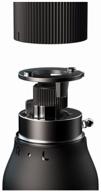
Reversible Mi 16-in-1 Ratchet Screwdriver

21 Review
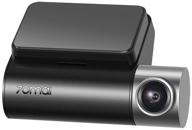
DVR 70MAI Dash Cam Pro Plus+, black (A500S), black

87 Review


